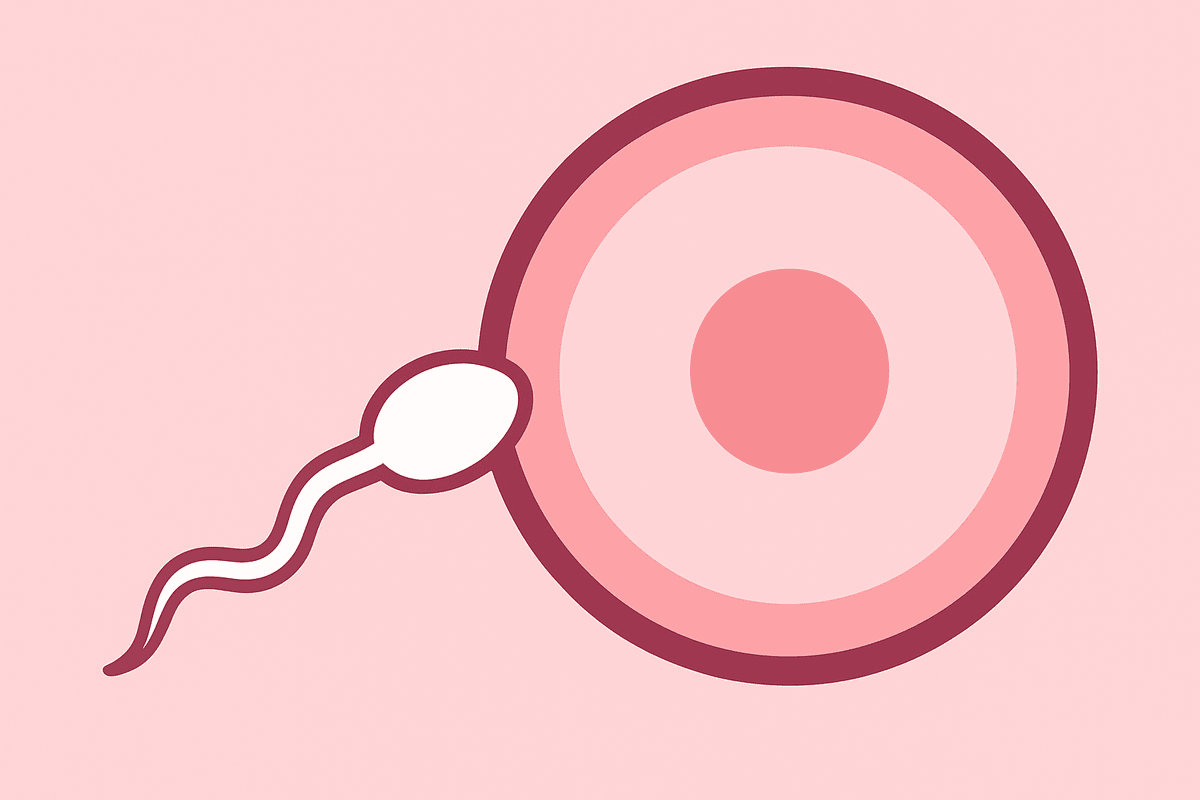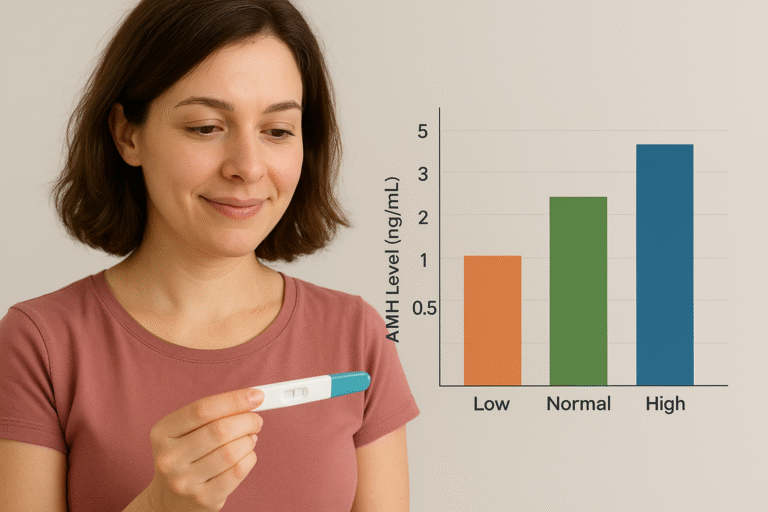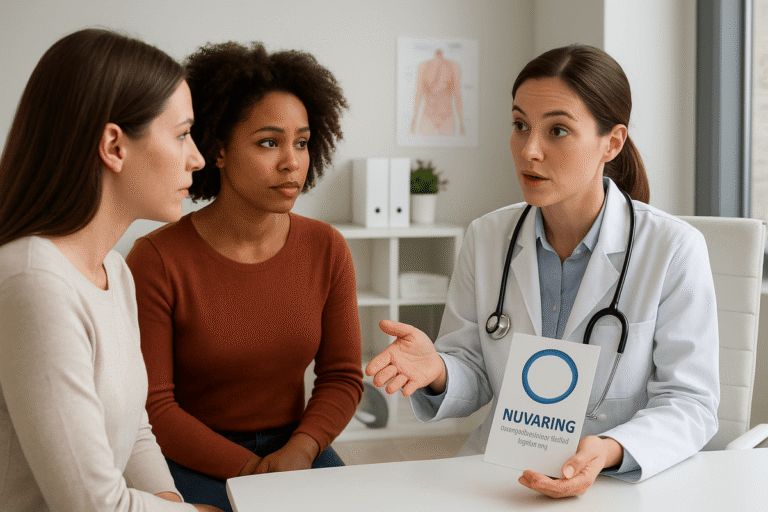For anyone trying to conceive, the two-week wait can feel endless. The uncertainty, hope, and worry about timing can be overwhelming. What if you had a clear biological signal that indicated your most fertile days? This signal exists; it is called the luteinizing hormone (LH) surge. Understanding this important hormonal change is key to enhancing your fertility.
This comprehensive guide will clarify the LH surge, transforming complex biology into a practical plan for your conception journey. We will explore what the LH surge is, how to track it accurately, and answer essential questions: How long after an LH surge do you ovulate? How long does an LH surge last? By mastering this knowledge, you will shift from being a passive observer to an empowered participant in your reproductive health.
What Exactly is an LH Surge?
To harness the power of the LH surge, it is crucial to understand its origin and purpose. Luteinizing hormone (LH) is produced by the pituitary gland in your brain. Throughout most of your menstrual cycle, LH remains at low and steady levels. Its main function is to work alongside another hormone, Follicle-Stimulating Hormone (FSH), to stimulate the growth and development of ovarian follicles, the small sacs in your ovaries that contain immature eggs.
As you approach the middle of your cycle, one follicle becomes dominant, housing the egg that will be released that month. This maturing follicle produces increasing amounts of estrogen. Once estrogen reaches a critical level in your bloodstream, it signals the brain. The pituitary gland then releases a significant burst of luteinizing hormone, which is the LH surge. This powerful hormonal wave triggers the final stage of ovulation, commanding the dominant follicle to rupture and release its mature egg, ready for fertilization.
How Your LH Surge Precisely Triggers Ovulation
Ovulation does not occur randomly; it is a direct result of the LH surge. Think of the LH surge as an urgent command from your brain to your ovaries. Once this surge is detected in your bloodstream, a precise sequence of biological events begins. The surge causes a series of changes within the dominant follicle, weakening its wall. At the same time, it prompts the egg to complete its final stage of maturation.
Approximately 24 to 36 hours after the LH surge starts, the pressure within the follicle becomes too great, causing it to rupture. The egg is then gently released from the ovary and captured by the finger-like projections (fimbriae) of the nearest fallopian tube. This moment marks ovulation. Therefore, identifying your LH surge is the most reliable way to predict when ovulation will occur, allowing you to time intercourse or insemination effectively.
By understanding the LH surge and its role in your cycle, you can take control of your fertility journey with confidence and clarity.
How Long After an LH Surge Do You Ovulate?
This question is crucial for anyone using ovulation predictor kits (OPKs). Understanding the timing of ovulation is essential for effective conception. Ovulation typically occurs 24 to 36 hours after the start of your LH surge. It is important to note that this timeframe refers to the beginning of the surge, not its peak. Therefore, most ovulation test kits recommend having intercourse on the day you receive your first positive test (indicating the surge has begun) and on the following day. This 48-hour window ensures that viable sperm are present in the fallopian tubes when the egg is released, maximizing the chances of fertilization. Sperm can survive in the female reproductive tract for up to 3-5 days, while an egg remains viable for about 12-24 hours after ovulation. By timing intercourse before ovulation, you leverage the lifespan of sperm to create optimal conditions for conception.
How Long Does an LH Surge Last?
The LH surge is a brief event, marked by a sharp spike. For most women, the entire surge from when LH levels rise above detectable levels to when they decline lasts about 48 to 50 hours. However, this duration can vary slightly from person to person and from cycle to cycle. Some women may experience a surge lasting only 24 hours, while others may have one that lingers for up to 72 hours. The “peak” of the surge, where LH concentration is at its highest, usually lasts less than 24 hours. This fleeting nature underscores the importance of daily (or even twice-daily) testing as you approach your expected fertile period. Testing just once a day could mean missing a short surge or catching only the end of it, leading to miscalculations regarding your ovulation window.
How to Accurately Track Your LH Surge for Maximum Conception Success
Understanding the theory is just one part; applying it effectively is another. Successfully tracking your LH surge requires the right tools and a consistent strategy. The most common and accessible method is using ovulation predictor kits (OPKs). These urine test strips detect the presence of LH above a certain threshold. A positive result occurs when the test line is as dark as or darker than the control line. For accurate results, test around the same time each day, preferably in the afternoon (between 12 PM and 4 PM), as LH often appears in urine after building up overnight. Avoid testing with first-morning urine, as it may be too concentrated and lead to false positives. Alternatively, you can track LH levels through quantitative blood tests or use digital fertility monitors that store cycle data and provide a clearer fertility picture. Whichever method you choose, consistency will be your greatest ally.
Boost Your Fertility Through Fiber-Rich Foods
Optimizing Your Chances: Strategizing Around Your Fertile Period
Identifying your LH surge is just one step; using that information to plan strategically is vital. Your fertile period includes the five days leading up to ovulation and the day of ovulation itself. Sperm can survive for several days within your body. The two days immediately before ovulation are actually your most fertile days. Since a positive OPK indicates that ovulation will likely occur within the next 24-36 hours, you can create an effective schedule. Aim to have intercourse:
- On the day you receive your first positive OPK (the surge has begun).
- On the following day (ovulation is likely imminent or occurring).
This ensures a healthy population of sperm is present and ready to meet the egg upon release. Continuing to have intercourse every other day for a few days after your surge can also be beneficial, especially if your surge lasts longer or if your ovulation is slightly delayed.
Beyond the Basics: Common Questions About LH Surge Tracking
Even with a solid plan, questions may arise. What if you never get a positive OPK? This could result from testing too infrequently, experiencing an unusually short surge, or having an anovulatory cycle (a cycle without ovulation). If this occurs consistently, consider discussing it with a healthcare provider. Another common scenario involves a “surge” that seems persistent or multiple surges. Women with PCOS (Polycystic Ovary Syndrome) may have elevated baseline levels of LH, leading to constant “almost positive” tests that do not peak or multiple mini-surges that do not result in ovulation. Additionally, it is possible to experience an LH surge without ovulating if the follicle does not rupture (known as Luteinized Unruptured Follicle Syndrome or LUFS). For most women, however, tracking the LH surge with OPKs is a reliable and empowering tool for understanding their unique fertility patterns and taking control of their conception journey.
Frequently Asked Questions (FAQ)
Can you have an LH surge and not ovulate?
Yes, this can happen, though it is not common. A condition called Luteinized Unruptured Follicle Syndrome (LUFS) may cause this. In LUFS, the body sends out the hormonal signal (the LH surge), but the follicle does not rupture to release the egg. Women with conditions like PCOS may also experience multiple LH surges without successfully ovulating.
My ovulation tests are always negative. What does that mean?
If your ovulation predictor tests consistently show negative results, several factors may be at play. You might be testing at the wrong time or not frequently enough to catch the surge. It is also possible to have an anovulatory cycle, which can occur occasionally. If this issue persists, it may indicate a hormonal imbalance, and you should consult a doctor.
How does tracking basal body temperature (BBT) relate to the LH surge?
Tracking BBT and LH levels works well together. The LH surge signals that ovulation is about to occur, while BBT confirms that ovulation has already taken place. After ovulation, your temperature will rise and remain elevated due to the hormone progesterone. Remember, BBT cannot predict ovulation in advance; it only confirms it after it happens.
Can stress affect my LH surge and ovulation?
Yes, high levels of physical or emotional stress can disrupt your hormonal balance. Stress can delay the LH surge, postponing ovulation, or even prevent it from occurring in that cycle. Managing stress is essential for maintaining reproductive health.
Are there any symptoms of an LH surge that I can feel?
Some women are very aware of their bodies and may notice signs around the time of their LH surge. These signs can include Mittelschmerz (a slight pain or cramp on one side of the abdomen), heightened senses, increased sex drive, and changes in cervical fluid, which becomes clear, stretchy, and resembles egg whites, a key sign of peak fertility.




